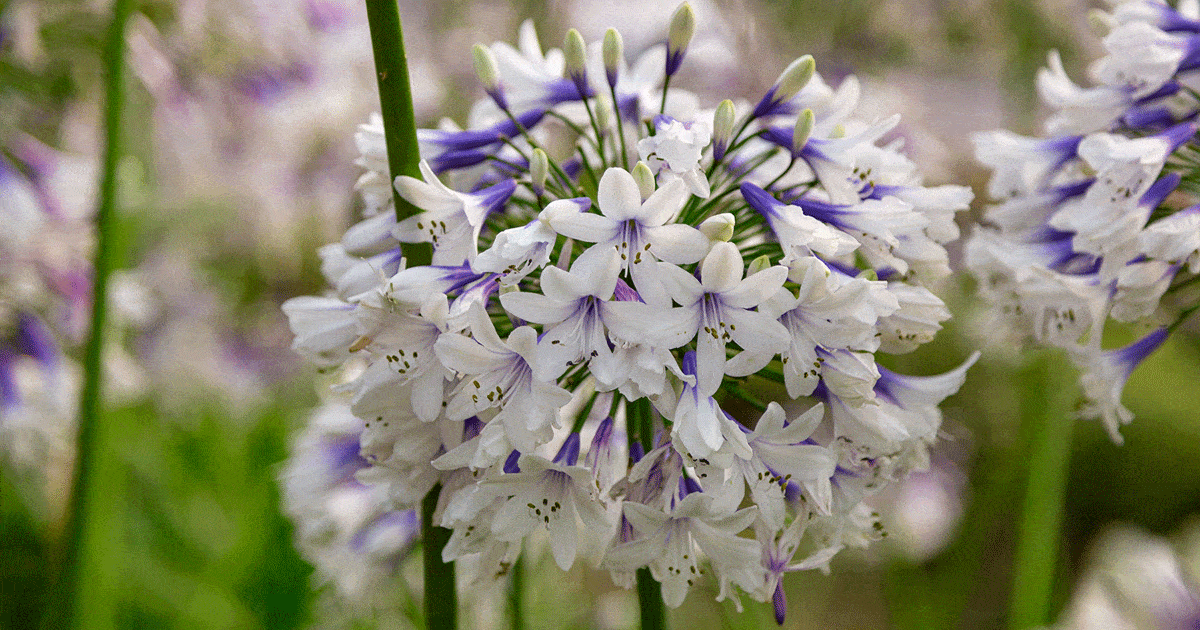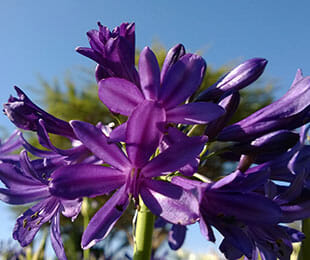Agapanthus Varieties: Selecting the very best for Your Landscape
Agapanthus Varieties: Selecting the very best for Your Landscape
Blog Article
Mastering the Art of Agapanthus Care: Necessary Actions for Healthy And Balanced Development and Vibrant Blossoms
In the realm of horticulture, the growing of agapanthus stands as a rewarding undertaking for those that seek to nurture these classy blooming plants. With their striking blooms and stylish foliage, agapanthus has actually recorded the interest of garden enthusiasts worldwide. However, achieving ideal development and vibrant blooms needs a nuanced approach that includes numerous vital steps. From selecting the right variety to mastering trimming techniques, the journey in the direction of cultivating prospering agapanthus plants is multifaceted and holds the key to unlocking the complete possibility of these botanical gems.

Choosing the Right Agapanthus Selection

When picking the ideal Agapanthus variety for your garden, take into consideration factors such as climate viability, bloom shade, and development routine. Additionally, take into consideration the climate in your region to make certain the Agapanthus range you pick can grow in your particular problems. Understanding the development behavior of different Agapanthus selections is critical for correct placement within your yard.
Suitable Planting Conditions
Considering the ideal environmental needs is necessary for successful Agapanthus cultivation. Agapanthus grows in well-draining soil with a somewhat acidic to neutral pH degree. When growing, choose a location that gets full sunshine to partial shade. In hotter environments, supplying some mid-day shade can stop scorching of the fallen leaves. Agapanthus plants are delicate to chilly temperature levels and ought to be secured from frost throughout winter season.
To ensure healthy and balanced development and dynamic blooms, plant Agapanthus light bulbs at a deepness of concerning 2-4 inches and room them 8-12 inches apart. Mulching around the base of the plants helps preserve wetness and subdues weed growth.
Watering and Feeding Tips
Preserving proper moisture levels and supplying crucial nutrients are vital elements in the treatment routine for Agapanthus plants. When it concerns sprinkling Agapanthus, it is critical to strike a balance. If overwatered, these plants choose continually moist dirt yet are susceptible to root rot. During the growing period, water deeply once a week, ensuring the dirt is well-draining to stop waterlogging. In hotter environments or during periods of drought, more frequent watering may be essential to keep the dirt evenly damp. Nonetheless, reduce watering in the winter season to stop waterlogged problems.
Fertilizing Agapanthus is necessary for promoting healthy and balanced growth and respected blossoms. Use a balanced plant food, such as a 10-10-10 formula, in the very early spring as new growth emerges. By adhering to these watering and fertilizing suggestions, you can ensure your Agapanthus plants flourish and generate vivid, resilient blossoms.
Pruning Methods for Agapanthus
Pruning Agapanthus plants at the ideal times and with appropriate methods is critical for preserving their health and advertising optimum growth and blooming. The perfect time browse around this web-site to trim Agapanthus is in late wintertime or early springtime before brand-new growth view it now arises.
Deadheading invested blossoms can likewise redirect the plant's power into generating even more flowers rather than establishing seeds. If you want to gather seeds for breeding, leave some blossoms to dry and fully grown on the plant.
Keep in mind to utilize tidy, sharp tools to make exact cuts and minimize the threat of introducing illness. Agapanthus. Normal pruning will certainly aid maintain your Agapanthus looking healthy and balanced and neat while making certain a bountiful screen of gorgeous flowers
Taking Care Of Usual Insects and Illness
After guaranteeing proper pruning techniques for Agapanthus, it is necessary to resolve typical insects and illness that can impact the wellness and vigor of these plants. Agapanthus plants are usually durable yet can still succumb specific concerns. One usual pest that affects Agapanthus is the Agapanthus gall midge. This small, orange fly lays its eggs in the vegetation, leading to distorted growth and flower buds that fall short to open up. To fight this insect, trim and damage any type of afflicted plant parts and consider using insecticidal soap.
Additionally, Agapanthus plants can experience from origin rot if they are grown in badly draining pipes dirt. By being cautious and taking timely activity against conditions and insects, you can assist your Agapanthus plants thrive and create vibrant blossoms. Agapanthus.

Conclusion
To conclude, grasping the art of agapanthus care includes selecting the appropriate variety, supplying excellent growing problems, correct watering and feeding, ideal pruning methods, and addressing typical bugs and illness. By complying with these necessary steps, you can guarantee healthy growth and dynamic flowers for your agapanthus plants. Remember to frequently check and preserve your plants to advertise their overall wellness and durability.
To make sure healthy and balanced growth and dynamic blossoms, plant Agapanthus light bulbs at a deepness of about 2-4 inches and space them 8-12 inches apart. By adhering to these watering check my blog and feeding ideas, you can ensure your Agapanthus plants thrive and produce lively, long-lasting flowers.
One usual pest that affects Agapanthus is the Agapanthus gall midget. Additionally, Agapanthus plants can endure from origin rot if they are grown in inadequately draining pipes dirt. By following these important steps, you can ensure healthy growth and dynamic flowers for your agapanthus plants.
Report this page